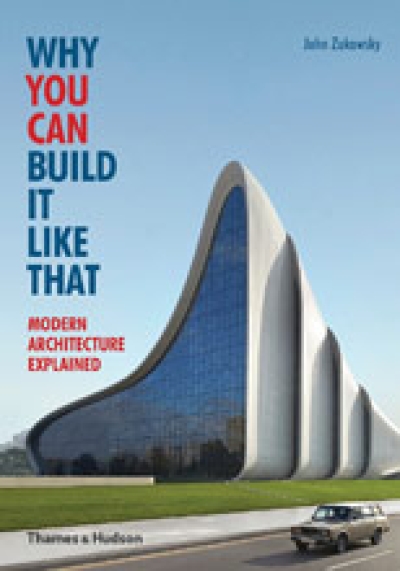C. Menke, J. Rebentisch (Hg.)
Kreation und Depression. Freiheit im gegenwärtigen…
Gregory Sholette
Dark Matter. Art and Politics in the Age of Enterprise…
Drawing Center (Hg.)
Iannis Xenakis. Architect, Composer, Visionary (Drawing…
Margit Rosen (Hg.)
A Little-Known Story about a Movement
Fundación Cisneros/Colección Patricia…
Tomás Maldonado in Conversation with María Amalia García
JA79
Junya Ishigami
Gert Urhahn
The Spontaneous City
Sharon Zukin
Naked City. The Death and Life of Authentic Urban Places
El Croquis 152/153
Herzog & de Meuron 2005-2010
Guy de Cointet
TSNX C24VA7ME A play by Dr Hun
Klanten, Ehmann, Bolhöfer (Hg.)
My Green City
Bippus, Huber, Richter (Hg.)
"Mit-Sein". Gemeinschaft – ontologische und…
Paul Virilio, Philippe Petit
Cyberwelt, die wissentlich schlimmste Politik
Corbett, Elms, Kapsalis (Hg.)
Traveling the Spaceways. Sun Ra, the Astro Black and other…
Ingmar Bergman
Laterna Magica. Mein Leben. Autobiographie
Chris Kraus
Where Art Belongs
The Institute of Social Hypocrisy
The Sound Of Downloading Makes Me Want To Upload
Ed Annink, Max Bruinsma (Hg.)
Gerd Arntz. Graphic Designer
Schubert, Schütz, Streich (Hg.)
Something Fantastic. A Manifesto by Three Young Architects…
Diarmuid Costello, Margaret Iversen (Hg…
Photography After Conceptual Art
Österreichische Gesellschaft für…
Umbau 25. Architektur im Ausverkauf. Architecture for Sale
Steven Heller, Lita Talarico
Graphic. Inside the Sketchbooks of the World's Great G…
Nils Röller
Magnetismus. Eine Geschichte der Orientierung
n+1 (Hg.)
What was the Hipster? A Sociological Investigation
Peter Hook
The Hacienda. How Not to Run a Club
Buchanan, Doordan, Margolin (Hg.)
The Designed World. Images, Objects, Environments
Tony Fry
Design as Politics
Hans Venhuizen
Game Urbanism. Manual for Cultural Spatial Planning
Gary Indiana
Last Seen Entering the Biltmore. Plays, Short Fiction,…
Amos Vogel
Film as a Subversive Art
Iris Holtkamp, Jan-Eric Stephan
Closing Down — All Stock Reduced — The Role of Design in…
Tom Holert, Marion von Osten (Hg.)
Das Erziehungsbild. Die visuelle Kultur des Pädagogischen
Beatriz Colomina, Craig Buckley (Hg.)
Clip, Stamp, Fold. The Radical Architecture of Little…
Giovanna Borasi (Hg.)
Journeys. How Travelling Fruit, Ideas and Buildings…
Keith Moskow, Robert Linn
Small Scale. Creative Solutions for Better City Living
Slavoj Zizek, Costas Douzinas (Hg.)
The Idea of Communism
Christian Hundertmark (C100)
The Art Of Rebellion 3. The Book about Streetart
Christoph Dreher (Hg.)
Autorenserien. Die Neuerfindung des Fernsehens
Charles Jencks (Hg.)
The Post-Modern Reader (AD Reader)
AA School of Architecture
AA Book. Projects Review 2010
Bill Moggridge
Designing Media
Aaron Levy, William Menking (Hg.)
Architecture on Display. On the History of the Venice…
Gui Bonsiepe
Civic City Cahier 2. Design and Democracy
Pepin Press (Hg.)
Web Design Index by Content 5
John Kelsey
Rich Texts. Selected Writing for Art
Kitayama, Tsukamoto, Nishizawa
Tokyo Metabolizing
Stephen Willats
Art Society Feedback
Avermaete, Karakayali, Von Osten (Hg.)
Colonial Modern. Aesthetics of the Past, Rebellions for the…
St. Buijs, W. Tan, D. Tunas (Hg.)
Megacities. Exploring a sustainable Future
Maia Francisco
Fontology. Free Fonts Source Book
Peggy Buth
Katalog. Desire in Represention
Creischer, Hinderer, Siekmann (Hg.)
Das Potosí-Prinzip
Juan Maria Songel
A Conversation with Frei Otto
Vito Campanelli
Web Aesthetics. How Digital Media Affect Culture and…
Danielle Pario Perra
Low Cost Design
Alice Foxley
Distance and Engagement
Marnie Fogg
Fashion Illustration, 1930 to 1970. From Harper's…
Markus Miessen
The Nightmare of Participation
Zbynek Baladran, Vit Havranek (Hg.)
Atlas of Transformation
Mike Jay
High Society. Mind Altering Drugs in History and Culture
S. Gaensheimer, S. von Olfers (Hg.)
Not in Fashion. Photography and Fashion in the 90s
Francis Alys
A Story of Deception
Dominique Ghiggi
Baumschule. Kultivierung des Stadtdschungels
Susan S. Fainstein
The Just City
Teal Triggs
Fanzines
Jan Verwoert
Tell Me What You Want, What You Really, Really Want
Boris Groys
History Becomes Form. Moscow Conceptualism
Brian Kuan Wood (Hg.)
Selected Maria Lind Writing
Artspeak / Fillip Editions
Judgment and Contemporary Art Criticism
Otto Neurath
From Hieroglyphics to Isotype. A Visual Autobiography
Elisabeth Blum
Atmosphäre. Hypothesen zum Prozess der räumlichen…
dérive 40/41
Understanding Stadtforschung
James Nice
Shadowplayers. The Rise and Fall of Factory Records
Giorgio Agamben
Nacktheiten
Florian A. Schmidt, Peter Lasch,…
Kritische Masse. Von Profis und Amateuren im Design
TwoPoints.Net (Hg.)
Left, Right, Up, Down. Neue Ansätze für die Gestaltung von…
Tony Conrad, Jutta Koether, John Miller
XXX Macarena LP
Paul Le Blanc, Helen C. Scott (Hg.)
Socialism or Barbarism? The Selected Writings of Rosa…
Lyle Owerko
The Boom Box Project. The Machines, the Music...
Enn Ots
Decoding Theoryspeak. An Illustrated Guide to Architectural…
Veit Erlmann
Reason and Resonance. A History of Modern Aurality
S. Ehmann, R. Klanten (Hg.)
Turning Pages. Editorial Design for Print Media
Jens Müller, Karen Weiland (Hg.)
Kieler Woche. Geschichte eines Designwettbewerbs
Martino Stierli
Las Vegas im Rückspiegel. Die Stadt in Theorie, Fotografie…
Andres Lepik
Small Scale, Big Change
Benedict Boucsein
Graue Architektur. Nachkriegsarchitektur
Harald Bodenschatz, Thomas Flierl (Hg.)
Berlin plant. Plädoyer für ein Planwerk Innenstadt Berlin 2…
T.J. Demos
Dara Birnbaum. Technology/Transformation: Wonder Woman
C. S. Rabinowitz, N. Kovacs (Hg.)
Assume Vivid Astro Focus
Michael Merrill
Louis Kahn. On the Thoughtful Making of Spaces
Bettina Götz (Hg.)
Abstract City #04. Urbanes Hausen
Rainald Goetz
Elfter September. 2010
Jenelle Porter (Hg.)
Dance with Camera
Todd Oldham
Joan Jett
Umool Umool Vol.9
The Rejected, the Recycled, the Regenerated
Margit Mayer
Civic City Cahier 1. Social Movements in the (Post-)…
Anne Ring Petersen (Hg.)
Contemporary Painting in Context
M. van Hal, S. Ovstebo, E. Filipovic (…
The Biennial Reader


































































































